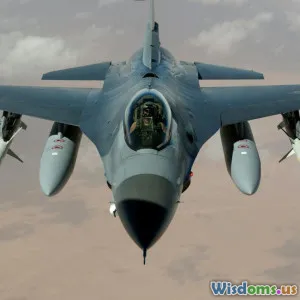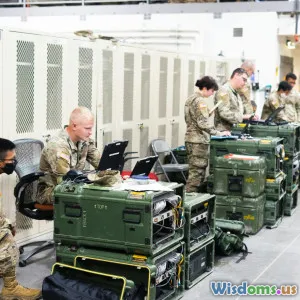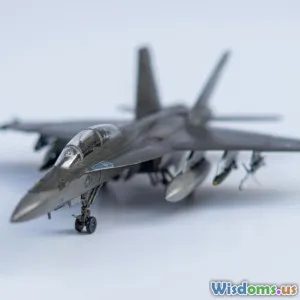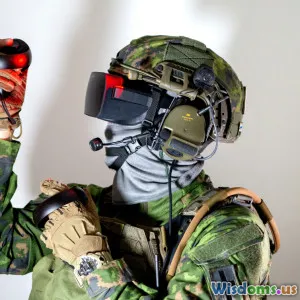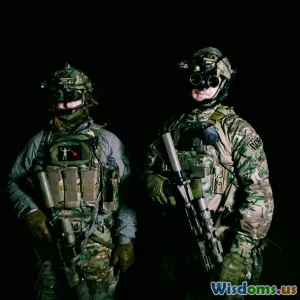
What NATO’s New Missile Shield Means for Allies
8 min read An in-depth analysis of NATO's new missile shield, its strategic impact, and what it means for member countries’ security and geopolitical posture. (0 Reviews)
What NATO’s New Missile Shield Means for Allies
Missile defense has always been a cornerstone of modern military strategy, acting as a protective umbrella for nations against missile threats. Recently, NATO unveiled a new missile shield system designed to enhance the defense capabilities of its member states. But what does this development truly signify for the alliance's collective security and geopolitical dynamics? In this comprehensive article, we delve into the nuances of NATO's upgraded missile shield, breaking down its strategic value and implications for allied countries.
Introduction: A New Era of Missile Defense
The rapid evolution of missile technologies worldwide has posed increasing challenges to global security. States and non-state actors alike have developed a broader range of ballistic and cruise missiles with diverse capabilities and ranges. NATO's response: the augmentation of its missile defense infrastructure via what is commonly referred to as the 'new missile shield.' This initiative leverages cutting-edge radar systems, interceptor missiles, and integrated command networks. The fundamental goal? To assure allies of protection from potential missile attacks, particularly from actors like North Korea, Iran, and in the context of Europe, an assertive Russia.
As global missile threats evolve, the missile shield serves not merely as a defensive tool but also as a potent geopolitical message that the alliance remains united and technologically ahead. Consider the example of the Aegis Ashore sites installed in countries like Poland and Romania, a critical part of NATO’s layered missile defense approach designed to counter intermediate and ballistic missile threats.
Understanding NATO’s Missile Shield Architecture
Layered Defense Explained
NATO’s missile shield strategy combines various defensive layers:
- Early Warning Radars: Strategic sites in Turkey, Spain, and other parts of Europe provide real-time missile detection capability.
- Missile Interceptors: Ground-based interceptors in Eastern Europe and sea-based interceptors aboard allied destroyers provide the means to neutralize threats mid-flight.
- Command & Control Systems: Integrated networks allow instantaneous data sharing among member states, enabling swift decision-making.
This layered approach creates a multi-tiered defense mechanism enhancing the interception success rate.
Recent Technological Enhancements
The latest missile shield investments incorporate advanced technologies such as:
- The inclusion of the SM-3 Block IIA interceptor missile, which has a higher probability of enemy missile interception at greater altitudes.
- Upgraded radar facilities with improved tracking of hypersonic and stealth missile profiles.
- The expansion of the Naval Striking and Support Forces NATO (STRIKFORNATO) capability that coordinates mobile missile defense assets.
Strategic Advantages for NATO Allies
Assurance and Solidarity
For many smaller NATO members, especially in Eastern Europe and the Baltics, the missile shield provides tangible reassurance. Lithuania, Estonia, and Latvia, given their proximity to potential adversaries, benefit greatly.
Lithuanian defense minister Arvydas Anušauskas recently asserted, "The missile shield is a tangible commitment from NATO that aggression will be met with collective response, reinforcing the credibility of Article 5."
Deterrence and Adversarial Calculus
The enhanced missile shield complicates potential adversaries’ calculations. Russia's advance missile capabilities and its deployment of Iskander missiles near NATO borders have been a significant concern. The missile shield’s intercept potential serves as a deterrent, reducing the incentive to escalate conflicts via missile attack.
Boosting Interoperability and Joint Readiness
The shield’s integrated nature fosters interoperability among member nations' armed forces. Joint exercises like "Formidable Shield" have increased in frequency, emphasizing missile defense drills, data sharing, and rapid response coordination.
Geopolitical Implications
Strengthening Transatlantic Ties
NATO’s missile shield underscores a reaffirmation of commitment between North America and Europe. The U.S.'s leading role in providing ship-based Aegis systems and interceptors epitomizes this transatlantic bond.
Impact on Global Missile Proliferation
While NATO’s missile shield is clearly defensive, it also influences the broader arms race dynamics. Nations observing NATO's advancements may seek to upgrade or increase their missile arsenals or develop countermeasures, feeding into a strategic competition.
As in 2022, when NATO announced plans for sensor improvements, China accelerated development of hypersonic glide vehicles signaling the global nature of missile defense challenges.
Potential for Escalation or Stability
Although the shield improves defense, it runs the risk of creating strategic illusions of invulnerability. This factor could embolden NATO countries to adopt more assertive postures, escalating tensions. However, the balance of improved defense and diplomacy remains key in maintaining stability.
Economic and Political Challenges
Implementing and maintaining the new missile shield entails substantial financial commitments. Estimates put the costs of interceptor deployment and maintenance for member states in the billions of euros. Smaller NATO members often rely on NATO solidarity funds or assistance from larger powers to maintain system integrity.
Politically, some non-aligned European countries view the missile shield as a divisive element, potentially destabilizing relations with Russia and undermining broader European security dialogues such as the Organization for Security and Co-operation in Europe (OSCE).
Conclusion: A Shield Beyond Defense
NATO’s new missile shield represents more than a physical barrier against missile attacks; it is a manifestation of alliance unity, technological innovation, and strategic signaling. For member nations, it translates to heightened security assurances, enhanced collaboration, and a sharper deterrence edge in an increasingly complex threat environment.
For the alliance, the shield is a statement: that collective security remains paramount and that NATO is adaptable in the face of novel missile threats. Yet, this development demands ongoing vigilance to ensure it fosters stability rather than fuels an arms race.
In the coming years, as missile technologies advance—especially hypersonic threats—continued evolution of this shield will be critical in safeguarding NATO allies and maintaining the fragile peace in an unpredictable world.
Sources & Further Reading
- NATO Press Releases on Integrated Missile Defense
- European Defence Agency reports on missile defense capabilities
- Statements by NATO Secretary-General
- Analysis from the Center for Strategic and International Studies (CSIS)
Author's Note: Understanding NATO’s missile shield gives us insight into the evolving nature of global defense cooperation and the strategic measures taken to protect shared values and security commitments.
Rate the Post
User Reviews
Popular Posts










